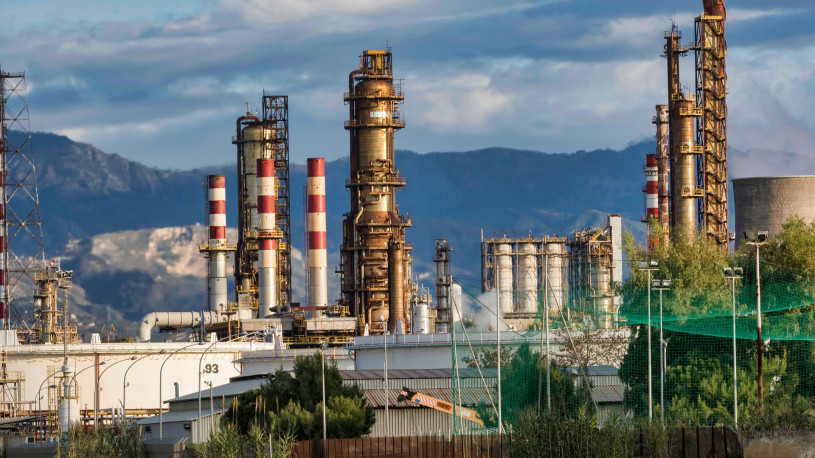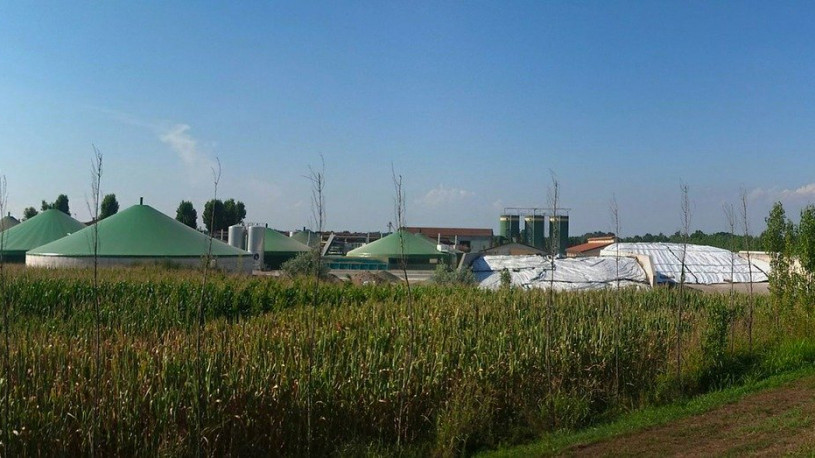-
The Chemical Industry 2016; The Story So Far
 Continue Reading
Continue ReadingFor many in the industrial chemical industry, 2016 has been a difficult year due to a number of challenges, as energy prices, regional economic slumps and investment uncertainty all taking their toll. But despite these downsides, there is still much for chemical traders to be optimistic about.
As Zacks Equity Research states in a recent report, “the chemical industry is expected to continue to recuperate through the balance of 2016, supported by continued strength in the light vehicles market, positive trends in the construction space and significant shale-linked capital investment.”
This prediction is all the more surprising given the depressed condition the industry was in following the 2009 recession, which hit chemical manufacturing very hard. Today, the mood among chemical producers is much more positive, with strong growth in construction and automobile markets giving a healthy boost to demand.
That said, chemical suppliers are still looking to lower costs, as Zacks reports, “Chemical companies are increasingly looking for cost synergy opportunities and enhanced operational scale through consolidations amid nagging macroeconomic challenges. Strategic measures including cost management and productivity improvement also remain the prime focus of these companies to stay afloat in a still-difficult global economic backdrop.”
Much of the chemical industry uncertainty revolves around reduced demand and lower growth in the Chinese economy. As Yahoo Finance stated in a report on the Chemical Industry Outlook that, “Lingering weakness in China – a key market for chemicals – is expected to remain a major drag on the chemical industry in the short haul. A persistent credit crunch, overcapacity and weak infrastructure and manufacturing investment are hurting the world’s second-largest economy.” The report also adds that, “the outlook for the fertilizer and agricultural chemicals space remains cloudy due to sluggish economic conditions in certain developing markets, particularly Brazil.”
Conversely, the U.S. chemical industry is in a good position for growth despite the fact that the dollar is relatively strong and oil prices are remaining much lower than in previous years. These two factors aside, the American Chemistry Council (ACC) predicts that, “U.S. chemical production will rise 1.6% in 2016 and 3.7% in 2017. Barring production of the pharmaceuticals segment, output is expected to go up 2.7% this year and 4.1% in 2017. [Meanwhile] basic chemicals production [is expected] to expand 3.1% in 2016 and 4.9% in 2017.
Much of this growth is through new capital investment that has added capacity and a feedstock cost advantage driven by the supply of natural shale gas. As the ACC reports, “The shale gas bounty and ample supply of natural gas liquids has been a huge driving force behind chemical investment on plants and equipment in the U.S. and have provided domestic petrochemicals producers a compelling cost advantage over their global counterparts.” U.S. chemical industry growth is further aided as the ACC, “expects domestic chemical industry capital spending to increase 10.4% in 2016 and 7.8% in 2017.”
The situation for the European chemicals industry is far more uncertain, as the general economy remains stuck in the doldrums, with Eurostat reporting, “paltry growth of 0.3% in the second quarter of 2016”. This low growth will likely continue into 2017 as a result of a pessimistic economic outlook and political uncertainty following Brexit.
European manufacturers are also struggling with prices driven lower by foreign imports, relatively higher energy and feedstock costs and the challenge of changing regulations caused by the introduction of REACH. All this has resulted in the European Chemical Industry Council (CEFIC), calculating that, “chemical output in the European Union contracted 0.7% year over year in the first four months of 2016 with chemical prices falling 3.8% for the period. [Whilst] Chemical production in the region rose just 0.6% last year.” Furthermore, “CEFIC expects a modest growth of roughly 1% in chemical output in both 2016 and 2017.”
Like all global industries, world chemical markets are experiencing great turbulence, with positive and negative factors influencing each region differently. Overall however, the chemicals industry is in rude health, with demand in key sectors fuelling manufacturing growth which in turn is having a positive impact on the chemicals industry.
As the Zacks’ report states, “The chemical industry faces certain roadblocks including a still weak agriculture market, depressed demand in the energy space, slowdown in China and a choppy Europe. Nevertheless, continued strong momentum in the automotive space and an upswing in the construction markets bodes well for the chemical industry.”
Photo credit: Vivian Dsena
-
Better and Cheaper Fuel Cells using Bimetallic Aerogels
 Continue Reading
Continue ReadingResearchers believe they have found a breakthrough nanomaterial that can be applied in making fuel cells perform better. As the new material uses fewer noble metals such as palladium and platinum, the research should also lead to cheaper battery feedstock.
The study was conducted by a team from Washington State University, and was centred on the development of a super low density substance called an aerogel.
Aerogels are solid materials that are sometimes called ‘liquid smoke’ due to the fact that they are more than 90% air. They can often be found in wet suits, fire fighting equipment, paint and windows as they act as excellent insulators, but they are also used in fuel cells as they have a large surface area and are highly porous, making them great for fuel cell catalysts.
As the online journal Phys.org reports, “Researchers introduced copper in the bimetallic system through their new, one-step reduction method to create hydrogel. The hydrogel is the liquid-filled form of aerogel. The liquid component is carefully and completely dried out of the hydrogel to create aerogel.”
The study was published in the journal Advanced Materials, where the production technique was explained as follows, “To accelerate hydrogel formation and further simplify the synthetic procedure, a series of MCu (M = Pd, Pt, and Au) bimetallic aerogels is synthesized from the in situ reduction of metal precursors through enhancement of the gelation kinetics at elevated temperature. Moreover, the resultant PdCu aerogel with ultrathin nanowire networks exhibits excellent electrocatalytic performance toward ethanol oxidation, holding promise in fuel-cell applications.”
By creating bimetallic aerogels using inexpensive copper, the researchers were able to reduce the amount of precious metal needed, thus lowering costs. The use of metals such as platinum and palladium his has been a major design flaw in hydrogen fuel cells, which although offer a ‘promising green energy solution, producing electricity much more efficiently and cleanly than combustion engines’, remain an expensive alternative.
Better still, is the fact that the production method for the aerogel is quicker than normal. As the Washington State University website reports, “They [the researchers] also sped up the time to make the aerogels, which makes them more viable for large-scale production.” Something that is described by research team member and assistant research professor Chengzhou Zhu as, “A great advantage for large scale production.”
With the world in need of ever larger and more powerful fuel cells, this discovery is sure to draw plenty of interest from battery manufacturers and fuel cell feedstock suppliers. This is especially true given that the research has provided not only a better performing battery, but also a cheaper one, that uses less noble metal.
How this will affect platinum or palladium prices is not yet known.
Photo credit: Washington State University
-
A New Technique for Biofuel Production; Cheaper and without Antibiotics
 Continue Reading
Continue ReadingResearchers at MiT have discovered a new metabolic engineering technique for producing liquid biofuels and biochemicals that the study shows to be more efficient and cheaper than traditional methods. Furthermore, the technique eliminates the need to use antibiotics, further lowering costs and reducing the biofuel industry’s impact on the global antibiotic shortage.
The problem occurs because conventional biofuel and biochemical production can become contaminated by unwanted bacteria that enter the process. These undesirable microbes then compete for nutrients with the target bacteria, reducing yields and productivity.
For this reason, many biochemical and biofuel processes use ethanol as a feedstock as it has a natural toxicity to most bacteria, but not the target microorganism (the yeast Saccharomyces cerevisiae) that is used to ferment it. But ethanol is not always a suitable biochemical feedstock, particularly for more complex biochemical production and highly advanced biofuels. In these situations the problem must be solved either with antibiotics, which can lead to tolerant bacterial strains, or by using a steam-based process that kills off the unwanted microorganisms, but at a high cost.
But all that may now change, as researchers have found a new technique that, according to reports from MiT uses, “engineered microbes, such as Escherichia coli, with the ability to extract nitrogen and phosphorous — two vital nutrients needed for growth — from unconventional sources that could be added to the fermentation vessels.” The report continues to explain that, “because the engineered strains only possess this advantage when they are fed these unconventional chemicals, the chances of them escaping and growing in an uncontrolled manner outside of the plant in a natural environment are extremely low.”
For example, conventional biochemical techniques often use ammonium as a source of nitrogen for the growth of their microorganisms. However, the unwanted bacteria, Lactobacilli, can also extract nitrogen from ammonium, and so competes for resources with the targeted organism. To combat this, the research team engineered microbes that can take their nitrogen from melamine, a “xenobiotic, or artificial, chemical that contains 67 percent nitrogen by weight”. As the unwanted bacteria cannot extract nitrogen from melamine, they struggle to grow and compete with the target.
As the researchers, Gregory Stephanopoulos, the Willard Henry Dow Professor of Chemical Engineering and Biotechnology at MIT, and Joe Shaw, senior director of research and development at Novogy, explained when they published their findings in the journal Science, “We engineered Escherichia coli to assimilate melamine, a xenobiotic compound containing nitrogen. After adaptive laboratory evolution to improve pathway efficiency, the engineered strain rapidly outcompeted a control strain when melamine was supplied as the nitrogen source.” The regular bacteria “need that special pathway to be able to utilize melamine, and if they don’t have it they cannot incorporate nitrogen, so they cannot grow.”
The team have now noted a synthetic six-step pathway which, “allows it to express enzymes needed to convert melamine to ammonia and carbon dioxide, in a strategy they have dubbed ROBUST (Robust Operation By Utilization of Substrate Technology).”
But the work did not stop there, as the online journal ScienceDaily reports, “the researchers engineered both S. cerevisiae and the yeast Yarrowia lipolytica to use potassium phosphite as a source of phosphorus, [and found that] like the engineered E. coli strain, both the engineered yeasts were able to outcompete naturally occurring strains when fed on these chemicals.”
What is more the study seems to show that the technique could be commercialised fairly rapidly, with few problems foreseen in up scaling. As the MiT website states, “The paper provides a novel approach to allow companies to select for their productive microbes and select against contaminants”. Whilst Jeff Lievense, a senior engineering fellow at the San Diego-based biotechnology company Genomatica who was not involved in the research, stated that, “In theory you could operate a fermentation plant with much less expensive equipment and lower associated operating costs.” Lievense continued, “I would say you could cut the capital and capital-related costs [of fermentation] in half, and for very large-volume chemicals, that kind of saving is very significant.”
With such a mandate for expanding this technique into mass-production, how long will it be before engineered microbes are commonplace in the biofuel and biochemical industries? And if the financial savings are as apparent as they seem to be, how long will it be before biochemicals and biofuels are the dominant sources of feedstock for … well … everything?
Photo credit: Novogy
